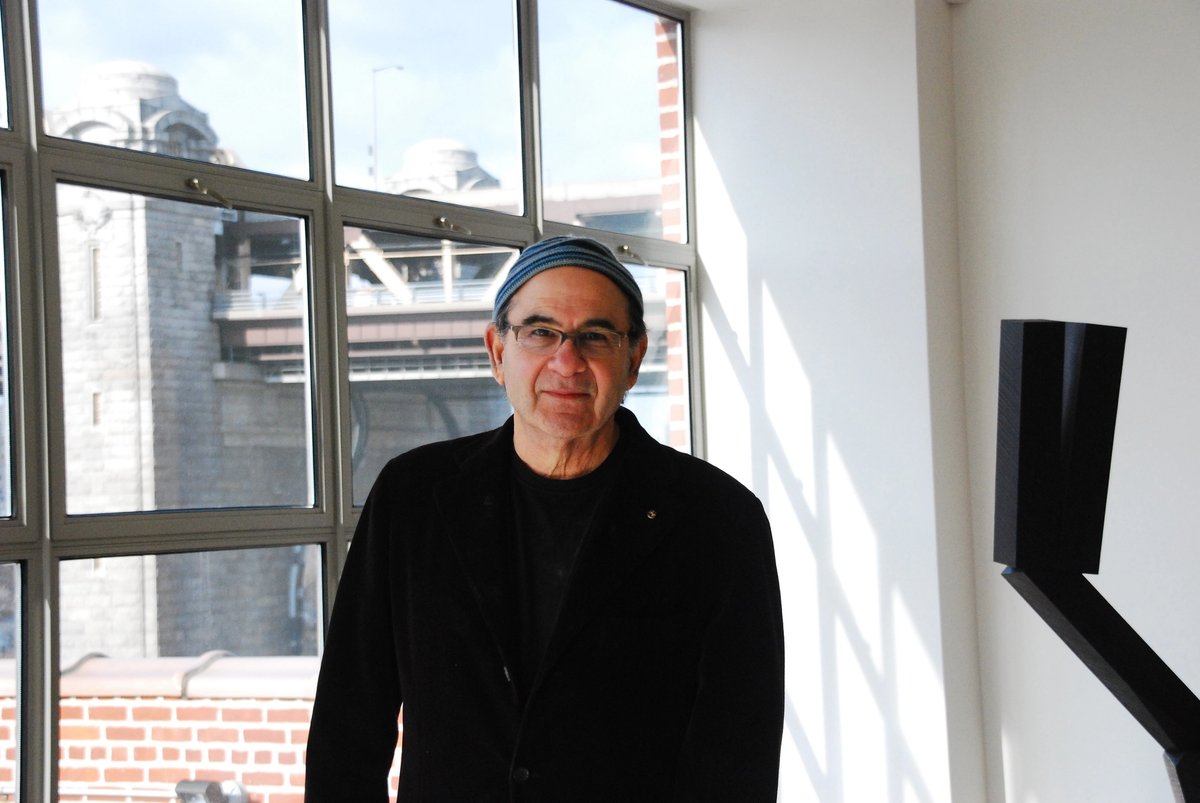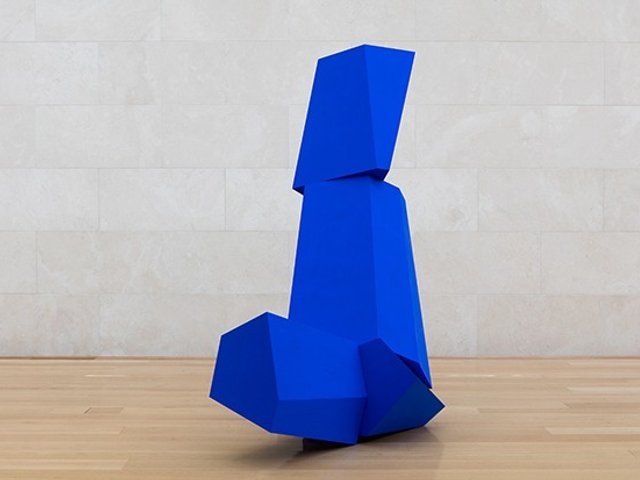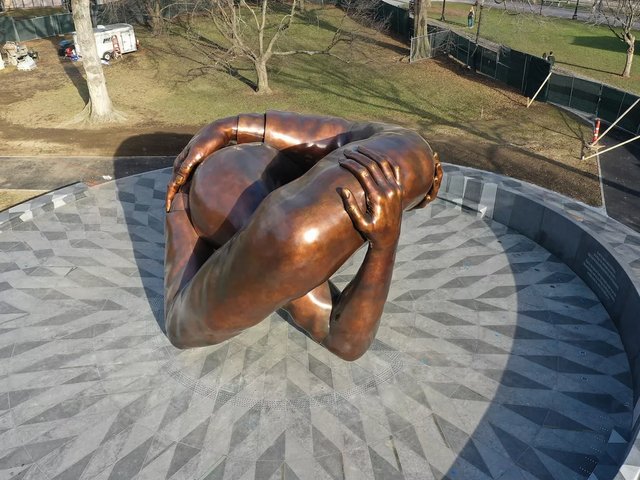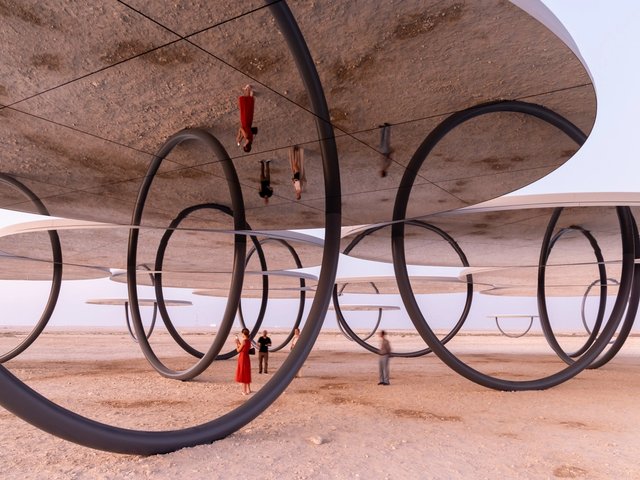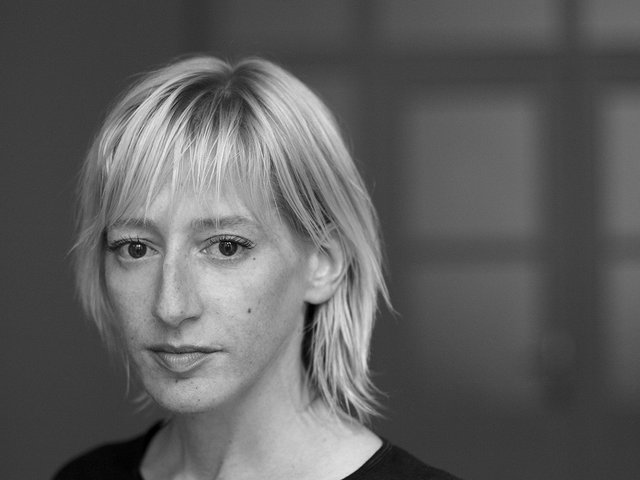The pioneering sculptor Joel Shapiro died on 14 June in Manhattan. He was 83 years old. His daughter Ivy Shapiro told The New York Times the cause of death was acute myeloid leukemia.
Best known for his vibrant, isomorphic statues constructed from wooden beams, Shapiro straddled the line between abstraction and figuration in his art practice, creating humanoid monuments that feel as if they might jump, stride or topple at any moment. Deceptively simple and surprisingly kinetic, Shapiro’s compact visual language allowed him to employ the sparest gestures for the greatest impact, making him a popular choice for large-scale public commissions.
He completed more than 30 in his lifetime, including the renowned Loss and Regeneration (1993), a somber installation for the plaza of the United States Holocaust Memorial Museum in Washington, DC. The work, consisting of two separate bronze casts that face each other across an open space, features a figure seemingly frozen mid-fall and an upended house, using spatial dialogue to comment on the human toll of geopolitical cruelty.
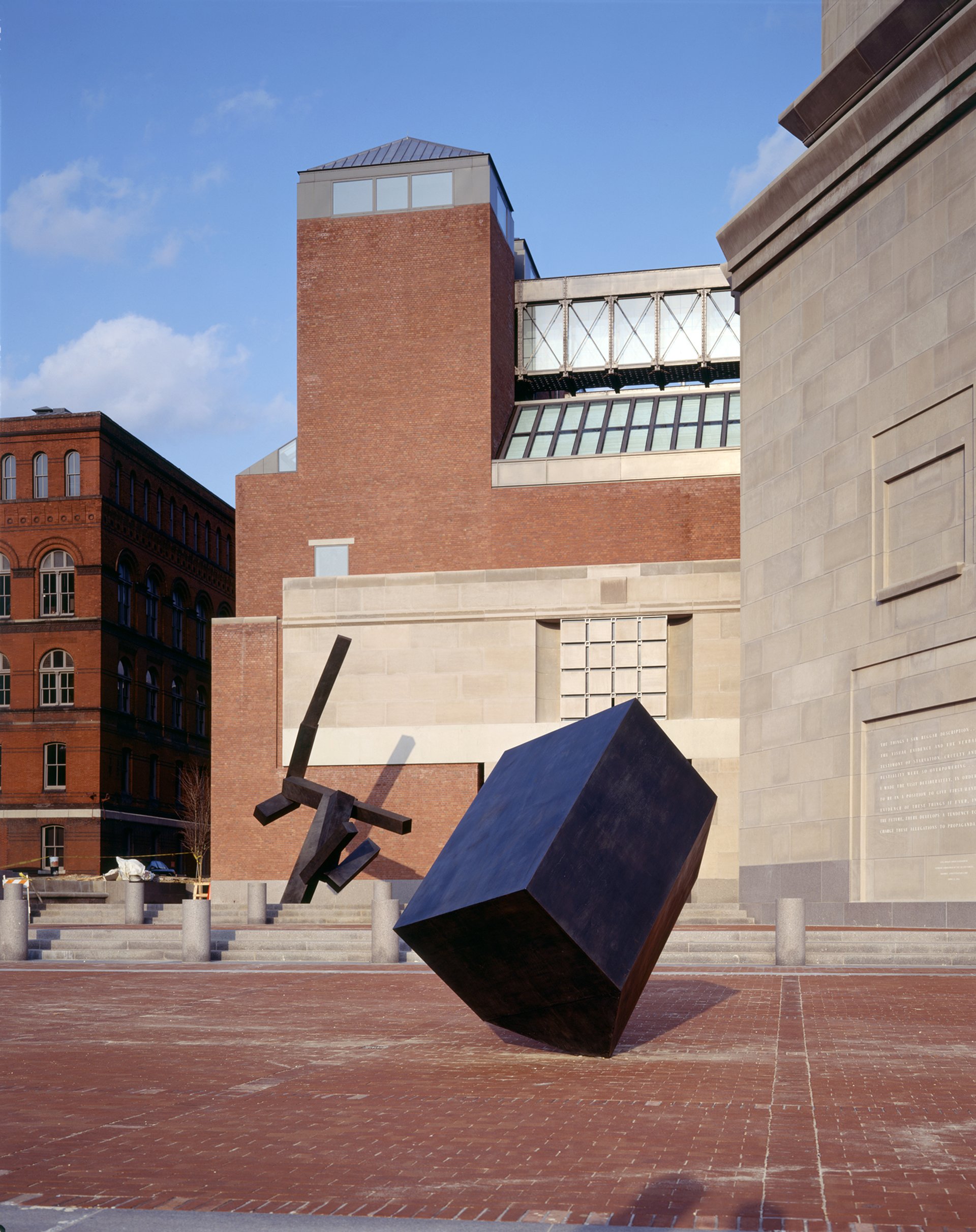
Joel Shapiro, Loss and Regeneration, 1993 Photo: Wotjek Naczas. Courtesy Pace Gallery
His public art is also featured at the Kennedy Center for the Performing Arts in Washington, Sculpture International Rotterdam and the US consulate in Guangzhou, China.
Shapiro had said that art “is about a kind of self-definition and a clarification of who one is in the world”. He told the Times: “Every form is loaded with the psychology of its maker.”
Born in 1941 in Queens, New York, Shapiro was born to Joseph and Anna Lewis Shapiro, whose careers as a doctor and microbiologist inspired his undergraduate pursuit of medicine at New York University, but his heart was not in it. After spending two years in India working with the Peace Corps, he returned to New York in 1967 with a fresh take on the icy Minimalism that was dominating the city's art scene. He made a big, tactile splash with his “fingerprint drawings” two years later, expansive works on paper covered in repeating rows of his inky fingerprints. The drawings piqued gallerist Paula Cooper’s interest, and after his inclusion in a group show at her space in Soho, Shapiro’s career gained momentum.

Joel Shapiro's studio in Queens, New York, in 2009 © Katherine Hardy
While his work engaged with the formal themes of Minimalism, Shapiro was interested in imbuing his pieces with personal history. “I want my work to amplify stuff or have more experience," Shapiro said in a 1988 oral history interview with the Smithsonian's Archives of American Art. "Everything [Donald] Judd's opposed to I'm for.”
In the 1970s, Shapiro became known for his diminutive cast-iron house sculptures, melancholy, floor-dwelling subversions of sculpture’s stuffy gravitas in the white cube. In 1982, at age 41, Shapiro was celebrated with the opening of a mid-career retrospective at the Whitney Museum of American Art, cementing his legacy as a master of a pared-down figurative lexicon. That exhibition subsequently travelled to the Dallas Museum of Fine Arts (now the Dallas Museum of Art), the Art Gallery of Ontario in Toronto and the and La Jolla Museum of Contemporary Art (now the Museum of Contemporary Art San Diego) in California. Shapiro's other notable institutional solo exhibitions included shows at the Whitechapel Gallery in London, the Stedelijk Museum in Amsterdam, the Nasher Sculpture Center in Dallas and the Walker Art Center in Minneapolis.
In 1992, Shapiro left Paula Cooper’s gallery to join PaceWildenstein (now Pace Gallery). Cooper and Shapiro reconciled in 2010, setting the stage for a spate of one-man exhibitions at a wide variety of Manhattan galleries, including Dominique Lévy, Craig Starr Gallery and Lévy Gorvy Dayan. His most recent solo show at Pace in New York, which opened in September 2024, included a piece called ARK (2020 / 2023-24,), a cheerful coagulation of wooden beams in the shape of a moving ship. The piece was recently acquired by the Museum of Modern Art in New York.

Joel Shapiro, ARK, 2020 / 2023-24 Photo by Jonathan Nesteruk. Courtesy Pace Gallery
Shapiro lived on the Upper East Side of Manhattan and maintained a studio in Long Island City, Queens, down the street from the middle school he attended as a boy. Funny, thoughtful and outspoken, he described his legacy with a refreshing frankness.
“Chronologically, I would be a Post-Minimalist, but I think all those categories are relatively meaningless, and artists are always trying to transcend the categories they’re pegged into, anyway,” he said in an interview with The Artist Profile Archive in 2020. “Art begets art. It’s a big long discourse.”


